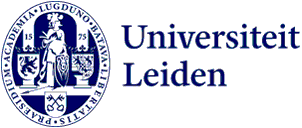Admission requirements
none
Description
This interdisciplinary course provides bachelor students with essential foundational skills in probability, linear algebra, data analysis, and programming, preparing them for advanced study in complex networks science. Through a blend of theory and practical exercises and projects, students will develop a solid understanding of basic probability concepts, such as random variables, distributions, and conditional probability, alongside fundamental linear algebra techniques used in network theory. Additionally, the course covers key data analysis methods, including data visualization using graphs, descriptive data analysis and linear regression. Students will use the acquired knowledge and modern programming tools to process and analyze real-world datasets. By the end of the course, students will have the analytical and computational skills needed to approach complex network systems, which are foundational for more specialized courses in network science.
Course Outline:
Linear Algebra:
Matrices, vectors, matrix operations, including calculating products, inverses and determinants of matrices.
Inner product of vectors in a Euclidean space, the norm of vectors, the norm of a matrix.
Eigenvalues and eigenvectors of a matrix, matrix diagonalization.
Probability:
Basic concepts of probability (sample space, event, random variable, probability distribution and density functions, conditional probability)
Numerical characteristics of a random variable (expectation, variance, moments). Discrete and continuous probability distributions (binomial, normal, Poisson).
The law of large numbers and the central limit theorem, Chebyshev and Markov’s inequalities.
Data Analysis
Data types, visualization of data
Descriptive statistics (mode, mean, variance, standard deviation, median, percentiles), tables and graphs
Data analysis using descriptive statistics
Linear regression
Programming
Main concepts of programming
Data structures and functions
Applications in data science and network science
Course Objectives
Upon successful completion of the course, students will:
Mathematics
Explain and be able to use the concepts of a matrix, and of a vector.
Be able to carry out matrix operations, including calculating products, inverses and determinants of matrices.
Explain the concept of inner product of vectors, and the norm of a vector in a Euclidean space, and be able to compute those.
Explain the concepts and be able to compute eigenvalues and eigenvectors of a matrix, and diagonalize the matrix if possible.
Explain the concept and be able to compute the norm of a matrix.
Explain the idea and the method of the least squares linear approximation
Be able to explain the basic notions of probability (sample space, event, random variable, probability distribution and density functions, conditional probability)
Understand and be able to compute the numerical characteristics of a random variable (expectation, variance, moments)
Recognize and be able to use well-known discrete and continuous probability distributions.
Be able to explain and use the law of large numbers and the central limit theorem, Chebyshev’s and Hoeffding’s inequalities.
Data Analysis
Understand the options for describing and presenting data
Be able to effectively summarize data using descriptive statistics, tables and graphs
Be able to interpret and critically evaluate presentations of data and analysis in graphs and tables
Be able to perform basic data analysis using descriptive statistics and linear regression
Programming
Be able to define and apply the main concepts of programming
Be able to use basic data structures and functions
Be able to create short programs which can solve basic computational problems
Explain how to apply programming concepts to problems in data science and network science
Timetable
In MyTimetable, you can find all course and programme schedules, allowing you to create your personal timetable. Activities for which you have enrolled via MyStudyMap will automatically appear in your timetable.
Mode of Instruction
Integrated lecture-seminar, two times per week. A typical class will consist of a part lecture, and part (group) work on exercises. Homework will be assigned after each lecture. Homework will not be collected, but used as a tool to prepare for weekly quizzes. In-class quizzes will be of two types: graded and ungraded. Ungraded quizzes will consist of one question on old or new material and will be used as practice to prepare for graded quizzes. A graded quiz will consist of 1-3 questions on the material of the previous lectures. The questions will be similar to the ones which appear on ungraded quizzes. There will be no more than one graded quiz per week.
Assessment method
In-class quizzes (20%)
Midterm exam (Mathematics, 40%)
Final project (Data Analysis and Programming, 40%)
One lowest or missing grade for a quiz will be dropped when calculating the final grade for quizzes. Quizzes are considered a practical and do not have a resit opportunity. In-class quizzes will be of two types: graded and ungraded. Ungraded quizzes will consist of one question on old or new material and will be used as practice to prepare for graded quizzes. A graded quiz will consist of 1-3 questions on the material of the previous lectures. The questions will be similar to the ones which appear on ungraded quizzes. There will be no more than one graded quiz per week. A resit exam for the midterm may be a written or oral exam, depending on the number of students who would like to take it. Final projects will be carried out in groups; it will include a short report and a presentation.
Reading list
tbd
Registration
tbd
Contact
Olga Lukina (o.lukina@math.leidenuniv.nl)
Remarks
part of the minor Network Science for a Connected World
